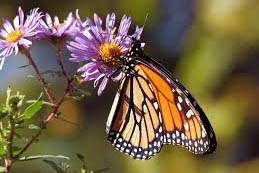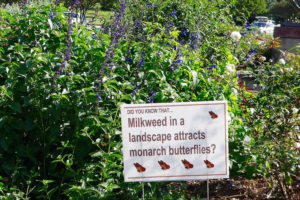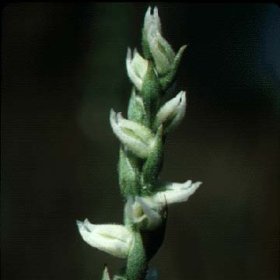
Fish gotta swim, birds gotta fly, orchids gotta be protected
When we read about conservation, it seems it’s always about all kinds of other species — everything but orchids. Why is that? Why can’t we just focus on orchids?
The reason is that orchids, like all species, are part of a bigger picture. Much as we might like to, we can’t isolate orchids from their ecosystem. And that’s why this story about the U.S. Fish and Wildlife Service, which is about butterflies, should be meaningful to us. It is a story that shows us the big picture – organizations working together to protect habitat, preserve species, and in general make our planet more livable for the multitude of life-forms it supports.
In several past columns I have written about several U.S. conservation organizations, but have not yet mentioned the U.S. Fish and Wildlife Service. A recent article in the Dallas Morning News presented a golden (or should I say “orange”) opportunity to talk about one of the many important projects of our federal government.

Did you know that milkweed in a landscape attracts monarch butterflies?
The DMN article tells us that $3.2 million is being pledged by the U.S. Fish and Wildlife Service to assist the plight of the monarch butterfly. As we know, milkweed is being eradicated due to increased weed control in our prairies, which are systematically being converted to cropland (GMO). The Monarch Butterfly project will restore more than 200,000 acres of habitat from California to the Corn Belt, as well as a strip along I-35 in Texas going north all the way through the corn-belt. Texas will host 10 of 24 scheduled projects, with in more than $700 thousand in funding. The project’s main goal is to plant more milkweed, a plant vital to the Monarchs’ survival as they make their long trip from Canada to Mexico every year.
In particular, this funding will go toward on-the-ground conservation projects, with $1.2 million anchoring a grant distribution fund for farmers and other private landowners who preserve habitat. What caught my eye was that this is reported to be the first funding effort of its kind.
The population of monarch butterflies, which peaked in the late 1990s at roughly 1 billion specimens, has fallen by a whopping 90 percent in recent years, according to the Center for Biological Diversity. This center has made an appeal to the U.S. Fish and Wildlife Service to list the monarch as endangered, thus providing even more protection. This funding has been pledged even before the final threat status determination has been made.

Spiranthes parksii orchid – native to Texas
The U.S. Fish and Wildlife Service plays a key part in protecting all kinds of species, both plant and animal. They are our eyes and ears for tracking threatened and endangered life forms. In fact, they are the ones who compile the information to determine the threatened or endangered status of plants and animals, and then make the recommendations for CITES (Convention on the International Trade of Endangered Species). Orchid enthusiasts will be pleased to know that the Texas Navasota Ladies’ Tresses (Spiranthes parksii) orchid is on this list which gives it increased protection.
The list of services performed by the U.S. Fish and Wildlife Service is impressive. For a good perspective of the USFWS in action, just scan the U.S. CITES BIENNIAL REPORT for 2011-2012 which is prepared by the Division of Management Authority, U.S. Fish and Wildlife Service. The USFWS wildlife inspection program provides front-line enforcement of the CITES treaty at U.S. ports of entry. Go about 30 pages into the PDF report and you can see list of selected seizures of unlawfully imported CITES specimens for 2011 and 2012. It is mind-boggling if not disturbing.

CITES – Convention on the International Trade of Endangered Species
Although the funding discussed in the DMN article is not about orchids, so often when I read the Nature Conservancy or the National Wildlife Federation magazines, I see that the U.S Fish and Wildlife Service as one of the partners in most of the important conservation projects currently in the works. For the above Monarch project they are partnered with the National Wildlife Federation and the National Fish and Wildlife Foundation. This was just a good example of the efforts of conservation in our country, and it demonstrates the effectiveness of public/private partnerships.